Benozzo Gozzoli’s Medici chapel frescoes
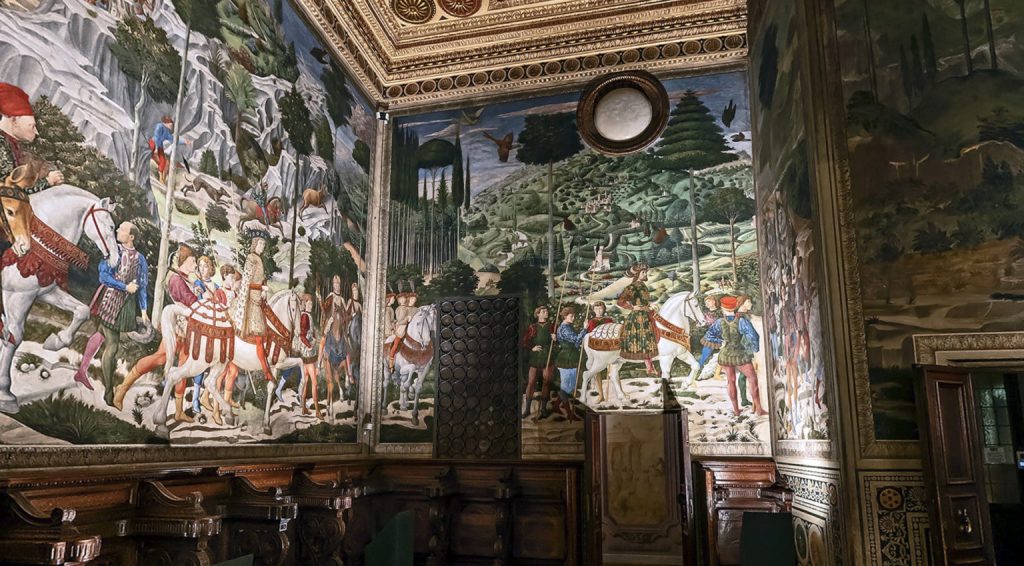
Inside the Medici Palace, just off the palace’s central courtyard at street-level, is the Medici Chapel (or Magi Chapel). Completed in the mid-fifteenth century, this intimate room still dazzles its visitors with its vividly painted frescoes and gold leaf which is in stark contrast to the palace’s rather modest exterior. One can easily imagine the glittering effect of flickering candlelight in the opulent space of the Medici Chapel.
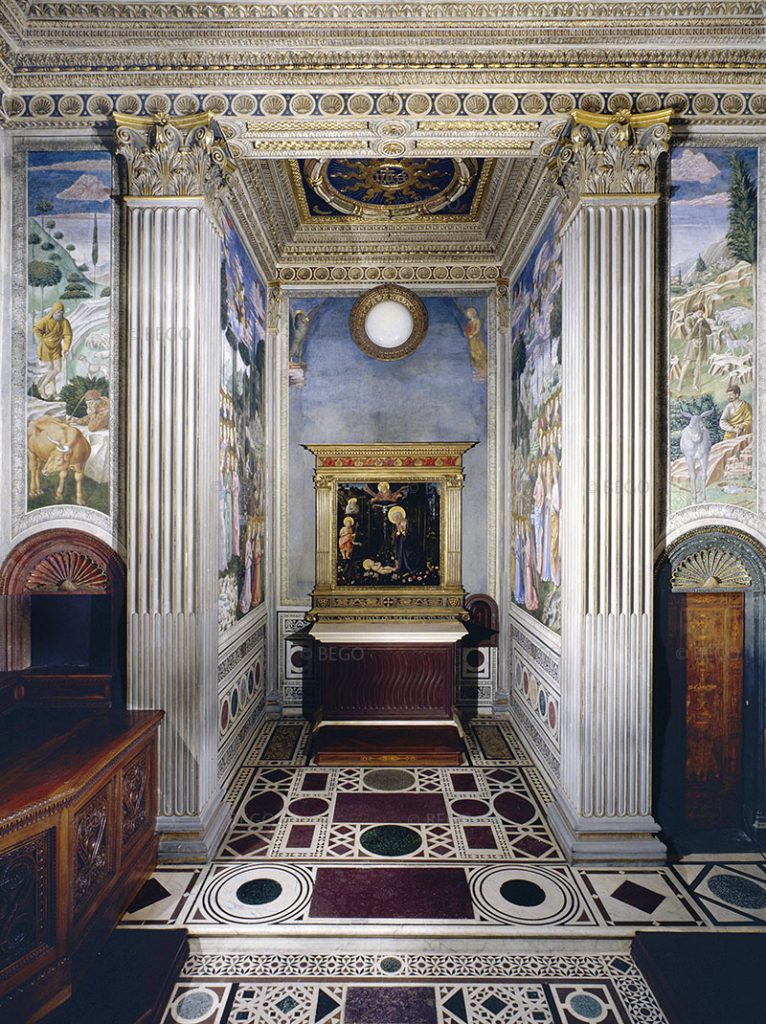
The design of the Medici Chapel
The small Medici Chapel was meant to function as a space of private worship for the family. Such private spaces for worship—whether in a public setting, such as a local church, or in one’s family home—were quite common for rulers and the wealthy in early modern Italy. However, papal permission for the construction of a private family chapel inside a residence was required, and the Medici had obtained this through Pope Martin V by 1442.
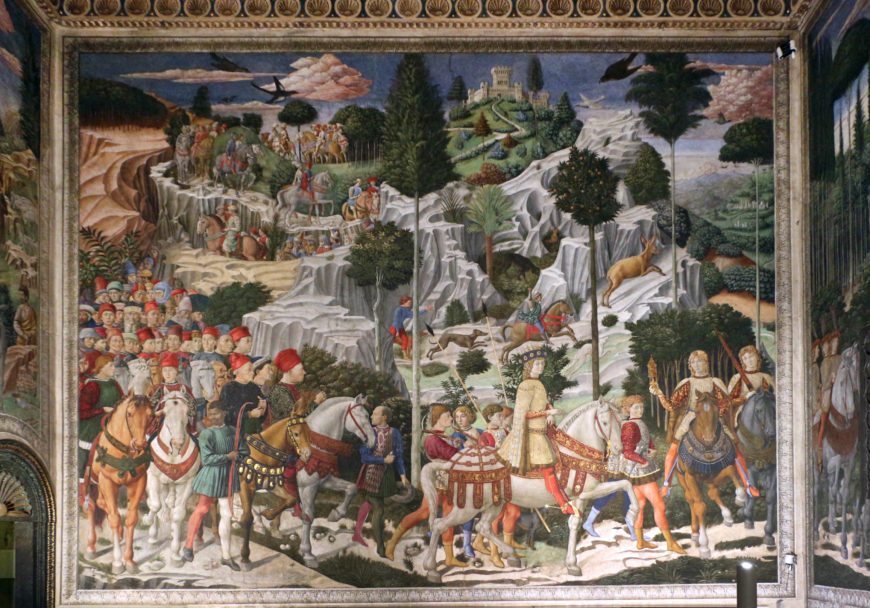
The Magi
A feast for the eyes, Benozzo Gozzoli’s frescoes cover every wall of the small chapel, enveloping the viewer from all sides. Said to have been painted in about 150 days in 1459, the theme centers around three biblical kings from far-reaching lands, commonly known as the Magi or wisemen. According to Christian tradition, these men visited the Christ child shortly after his birth and brought expensive and exotic gifts of gold, frankincense, and myrrh. The three kings and their large entourage are painted with rich detail as they complete their long journeys.
Their procession extends across the east, south, and west walls of the nearly perfectly square space, leading towards the north wall which incorporates an unusual square apse (they are most often hemispherical). With Lippi’s altarpiece at its center (today a copy of the original work), the decoration of the apse denotes a separate realm, where frescoed angels appear to worship on either side of the Adoration in the Forest altarpiece.
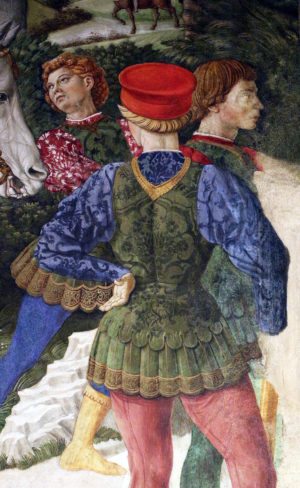
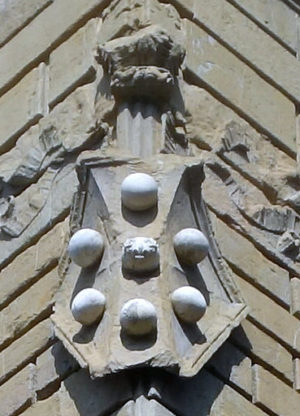
The gold-leaf applied throughout the composition helped to create a shimmering, ethereal experience when viewed in candlelight. The incorporation of this expensive material, as well as the use of costly pigments like ultramarine blue, made from lapis lazuli, cast the Medici in the role of the Magi, “giving” Christ an expensive gift by way of paying for the construction and decoration of this space. This effect is reinforced by the inclusion of portraits of Medici family members in the guise of the Magi and their entourage. Spotted throughout the frescoed walls are orange trees, a common Medici symbol reflective of the palle (balls) of their coat of arms, lest any future visitors question the patronage of the space.
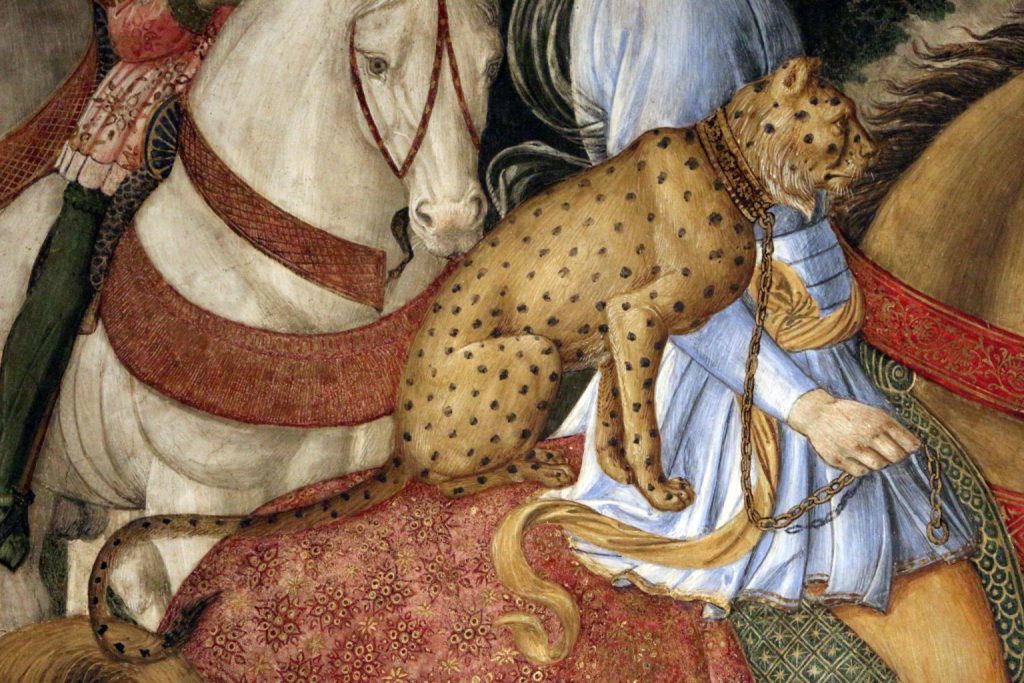
Across the Chapel’s walls, the Magi travel through an incredibly rich, detailed landscape, full of carefully rendered flora and fauna. Deer, hunting dogs, rabbits, various birds, monkey, camels and exotic cats galivant amongst the exquisitely dressed crowds. This verdant landscape also draws influence from works of the International Gothic style in its moments of careful ornamentation and patterning, bright and rich colors, and extreme attention to every tiny detail.
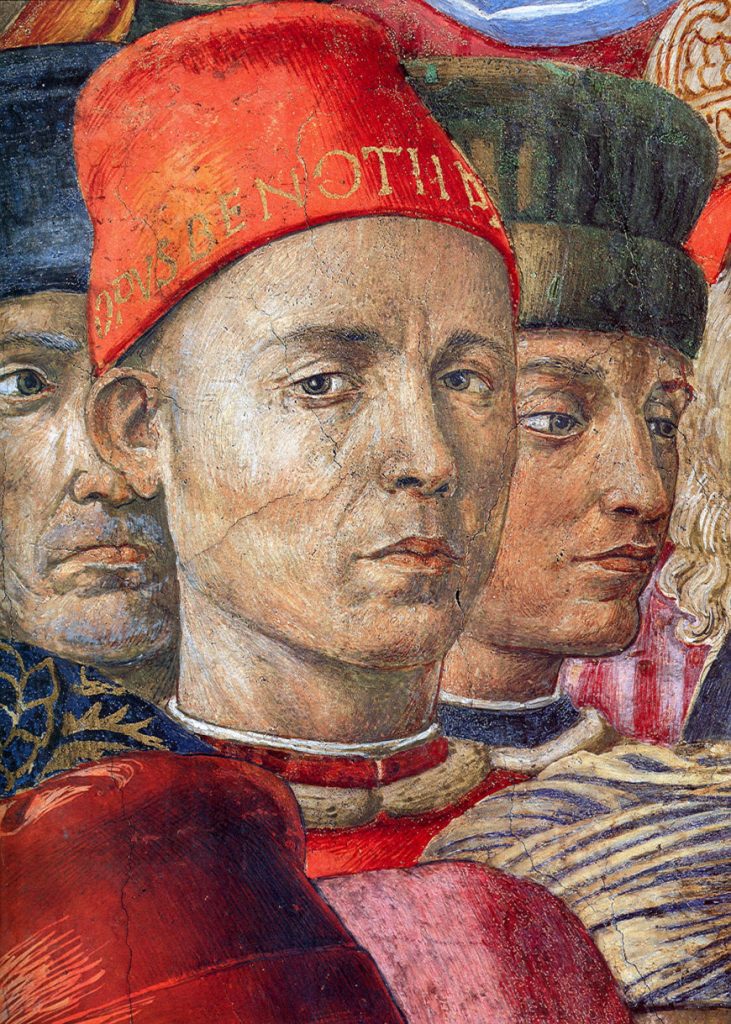
The artist included his own portrait twice, just in case you missed him the first time. He looks directly out at the viewer in both instances. Here at the end of the procession, Gozzoli’s red hat is inscribed in gold leaf with the words, “Opus Benotii” (the work of Benozzo), the only legible text found on anyone’s attire. By incorporating these two self-portraits into the scene, Gozzoli made sure that he would be remembered long after his death, and even more importantly, that he would be remembered in connection with the powerful Medici family.[1]
- Dr. Rebecca Howard, "Benozzo Gozzoli, The Medici Palace Chapel frescoes," in Smarthistory, April 11, 2022, accessed February 28, 2023, https://smarthistory.org/benozzo-gozzoli-magi-chapel-medici-palace-frescoes/ ↵

